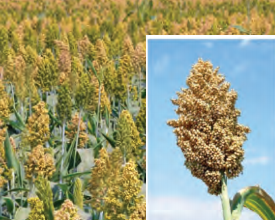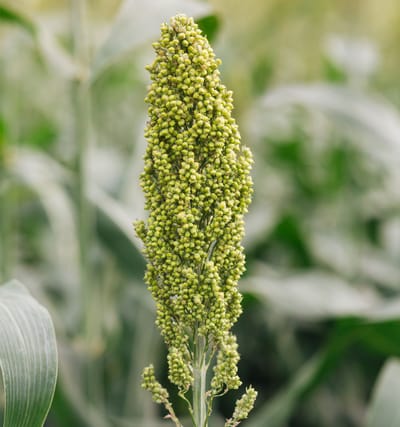sorghum
சோம்பல் நீக்கும் சோளம்
Sorghum, (also known as Jowar) is the world’s fifth major cereal food crop in terms of production and acreage after rice, wheat, maize and barley. In India, the sorghum grains are used mainly for food while the stover after harvest of grains is highly valuable as nutritive fodder to animals. The grains are also used for poultry feed and has other industrial uses such as potable alcohol production. Sorghum scientifically known as C4 plant, is one of the most energy efficient crops in use of solar energy and water to produce food and biomass. The crop has inherent drought tolerant nature and can be grown under wide range of environmental conditions. In the semi-arid regions sorghum is a dual-purpose crop, as both grain and stover are highly valued for human and animal consumption, respectively.
 For bone health
For bone health
Calcium absorption, critical for bone health, is increased by magnesium. Compared to rice and wheat, sorghum contains higher levels of magnesium1.
 To defer age-onset degenerative diseases
To defer age-onset degenerative diseases
Sorghum is abundant in phenolic compounds and antioxidants2. Therefore, it has the potential for protection against age-onset degenerative diseases3.
 To keep diabetes at bay
To keep diabetes at bay
Sorghum has high resistant starch, which, in turn contributes to a low glycemic index and helps slow the absorption of carbohydrates, preventing extreme blood glucose fluctuations5, benefitting people with diabetes and obesity4.
Calcium absorption, critical for bone health, is increased by magnesium. Compared to rice and wheat, sorghum contains higher levels of magnesium1.
Sorghum is abundant in phenolic compounds and antioxidants2. Therefore, it has the potential for protection against age-onset degenerative diseases3.
Sorghum has high resistant starch, which, in turn contributes to a low glycemic index and helps slow the absorption of carbohydrates, preventing extreme blood glucose fluctuations5, benefitting people with diabetes and obesity4.

